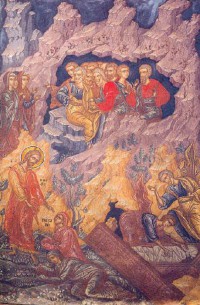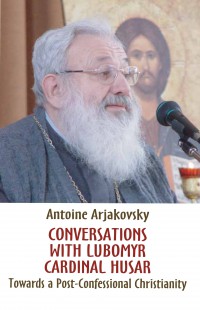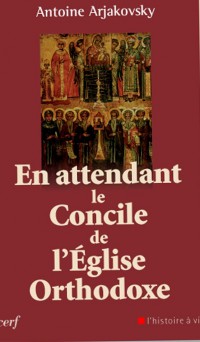Celebrate Easter Date Together
 Currently, Christians of the world celebrate the Great Holiday Easter on two different days, which is an evident marker of the divisions that divide the Christian denominations. On April 4, 2010, and April 24, 2011, Easter in the denominations’ calendars coincidentally fall on the same day. People who signed this text call to Christians of all denominations to use this period to prepare to jointly celebrate the Easter holiday on April 8, 2012, on the day which corresponds to the rule and method for the calculation agreed upon by the Catholic, Protestant, and
Currently, Christians of the world celebrate the Great Holiday Easter on two different days, which is an evident marker of the divisions that divide the Christian denominations. On April 4, 2010, and April 24, 2011, Easter in the denominations’ calendars coincidentally fall on the same day. People who signed this text call to Christians of all denominations to use this period to prepare to jointly celebrate the Easter holiday on April 8, 2012, on the day which corresponds to the rule and method for the calculation agreed upon by the Catholic, Protestant, and
*******
In the first centuries of the Christian era was a disagreement regarding the date of Easter. The problem was addressed at the Ecumenical Council in
During the conference in
If the astronomical calculation of the Nicea rule is more accurate in the Gregorian Calendar than in the old Julian Calendar, the Roman Catholic and Protestant Churches in Aleppo made a step toward the Orthodox Churches by agreeing to set the date of Easter according to the cosmic calendar, and not having a fixed date, as it was proposed by the Holy Hierarch to the pan-Orthodox meeting in Chambésy in July 1977.
At this pan-Orthodox meeting in Chambésy it was recalled that the symbol of spring equinox is a symbol of the first day of creation, the moment of division of day and night and proclamation of victory of light over darkness. The symbol of the full moon (which earlier corresponded to the Jewish Passover) is a symbol of the fourth day of creation, the moment of creating two lights and presage of the victory of light over darkness. Finally, the symbol of the first Sunday after the full moon of the spring equinox reminds of the Resurrection of Christ, the one and definite victory in human history over death, which leads to the everlasting eight day of creation. According to this rule, Easter is always celebrated in accordance to the Nicea rule after the Jewish feast of Passover (according to the Ancient Jewish calendar, which in the calendar of the divine-human union united the Passage of the
Celebrating Easter according to the Aleppo rule allows all Christians to realize the message of the fathers of the Nicea Ecumenical Council, that on the day of resurrection all the earth is illuminated – one hemisphere receives all the light of the sun, and the other hemisphere receives all the light of the moon.
Participants of the meeting in
Participants of the Ecumenical Seminary in Lviv (April 2009), organized by the Institute of Ecumenical Studies of the Ukrainian Catholic University, who represented all the Christian Churches of the city (Orthodox, Catholic, and Protestant), and also representatives of the Pontifical Council for Promoting Christian Unity and the World Council of Churches in a positive manner reviewed the consensus reached in Aleppo. They also expressed wishes that 2010 and 2011, when the dates of Easter fall by coincidence on the same date, be periods of preparation to the joint celebration of Eastern on April 8, 2012, on the day when in the astronomical plan will correspond to the Nicea rule. During the press conference which was organized after the seminar, the members explained that the confirmation by the Orthodox Churches of the consensus in Chambésy in 1977 (repeated by the pre-council conference at the Holy Orthodox Synod in 1982) would make possible such a perspective.
At the same time Christians around the world can unite their prayers and their efforts, so that the years 2010-2011 led to widest possible joint celebration, so that the 8th of April, 2012, everywhere where Christians reach consensus and receive benediction from their bishops or Church Authorities, celebrate together the most blessed feast of Christ’s Resurrection.
Signatures (surname, name, email address), which precede the message: “I support the call to celebrate on one day according to the rule determined by consensus in Aleppo, on April 8, 2012, Easter everywhere where Christians receive benediction from their bishops or Church Authorities” should be sent to the Institute of Ecumenical Studies (UCU) of Lviv: ies.ucu@gmail.com
Antoine Arjakovsky. Cоnversations with Lubomyr cardinal Husar Towards a Post-Confessional Christianity
 Others have inspired with a charisma and spiritual power that seem super-human or defy the laws of nature.
Others have inspired with a charisma and spiritual power that seem super-human or defy the laws of nature.
Today, at the beginning of the twenty-first century, most of us hope for spiritual guides who can touch us personally.
Patriarch Lubomyr Husar is one of those unique figures who make an immediate, warm, welcoming impression and contact people on a basic human level. This direct simplicity has been nourished by his unusually rich experience and personal trials. Lubomyr Husar’s complex life has carried him across many lands and cultures and brought him to serve the Church in a variety of contexts and ministries. Some of the complexities came with a hidden twist; most have been lived with an exemplary lightness and a singular grace.
A new book of Antoine Arjakovsky “Waiting for a Pan-Orthodox Council” in French
 The first one is titled “Aspects of Orthodox Christian thought.” It briefly outlines the main stages of preparation for the Pan-Orthodox Council from the historical perspective, tying them with the general evolution of Orthodox thought after the Second World War. The second chapter “Towards practical ecumenism” considers one of the most controversial issues of Orthodoxy, which will be a subject of special attention during the council, namely: the legitimacy of the ecumenical movement for Orthodoxy and relationships of Orthodox churches with the whole Christian world.
The first one is titled “Aspects of Orthodox Christian thought.” It briefly outlines the main stages of preparation for the Pan-Orthodox Council from the historical perspective, tying them with the general evolution of Orthodox thought after the Second World War. The second chapter “Towards practical ecumenism” considers one of the most controversial issues of Orthodoxy, which will be a subject of special attention during the council, namely: the legitimacy of the ecumenical movement for Orthodoxy and relationships of Orthodox churches with the whole Christian world.
The third chapter “Common features of the social doctrine of the churches” concludes that the Orthodox churches, each one with their own tempo and way, seek ecumenism, not only doctrinal but practical. The fourth chapter “The future of ecumenism in Ukraine and Russia” does not address directly the theme of the next council. However, the author believes it has its place in this book since it is suitable for the consideration of certain issues of the future council (such as the issue of the ecumenical movement or a common calendar), based on local experience.
Also, the Institute of Ecumenical Studies is preparing translations of Antoine Arjakovsky’s book "Waiting for a Pan-Orthodox council” into the Ukrainian and Russian languages.
